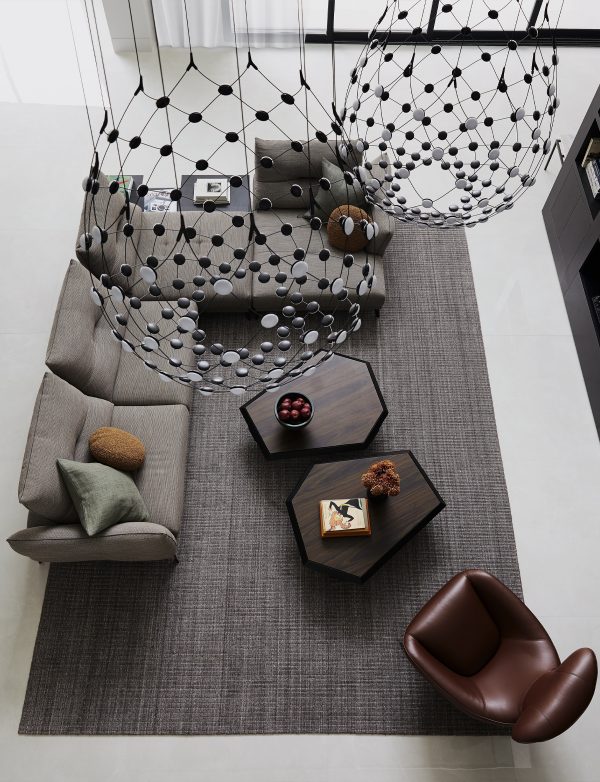Rugs play a vital role in interior design, adding warmth, texture, and personality to a room. They have the power to tie together various elements, create visual interest, and define distinct areas within a space. However, choosing the right rug size is crucial to ensure a harmonious and well-proportioned room design. In this article, we will explore the question, “When is a rug too big for a room?” and delve into the factors that determine the perfect rug size for your space.
Importance of Rugs in Interior Design
Rugs are more than just floor coverings; they are design elements that can transform the look and feel of a room. They provide comfort underfoot, absorb sound, and enhance the overall aesthetics. From cozying up a living room to defining a dining area, rugs have the power to make a significant impact on the ambiance and functionality of a space.
Overview of the Topic
Determining the appropriate rug size can be a challenging task, even for experienced interior designers. Many factors come into play, such as room dimensions, furniture placement, and desired visual effects. In this article, we will explore the key considerations that determine whether a rug is too big for a room, providing valuable insights to help you make informed decisions.
Introduce the Concept of a Rug’s Size Impact
The size of a rug can significantly influence the proportions and balance within a room. A rug that is too large may overwhelm the space, while one that is too small can make it feel disjointed. Achieving the perfect rug-to-room ratio is essential to create a harmonious and visually pleasing environment. In the following sections, we will examine the impact of rug size on room proportions, practical considerations to keep in mind, and signs that indicate a rug is too big for a room.
With this introduction, we set the stage for the article, highlighting the importance of rugs in interior design and the significance of choosing the right size. The readers will be intrigued to explore further to learn about the impact of rug size and how to avoid the pitfalls of choosing an oversized rug.
Understanding Rug Sizes
1. Common rug sizes available
When it comes to rug sizes, there are several common options to choose from. These sizes are often available in stores and online retailers, making them more accessible for homeowners. Common rug sizes include small accent rugs (2’x3′ or 3’x5′), medium-sized rugs (5’x8′ or 6’x9′), and larger area rugs (8’x10′ or 9’x12′). Understanding these standard sizes can serve as a starting point in determining the appropriate rug dimensions for your room.
2. How rug sizes are measured
Rug sizes are typically measured in feet, using length and width dimensions. The dimensions of a rug refer to the area it covers on the floor. For example, an 8’x10′ rug covers 8 feet in width and 10 feet in length. It’s important to note that rug sizes can vary slightly due to manufacturing processes, so it’s advisable to measure the actual rug before making a purchase.
3. Factors to consider when choosing a rug size
Selecting the right rug size involves considering various factors that go beyond mere room dimensions. Key factors to consider include the room’s purpose, furniture placement, and the desired visual impact. For example, in a living room, you may want the rug to accommodate the seating area and create a cohesive space. In a bedroom, the rug should extend beyond the bed to provide comfort when stepping out. By taking these factors into account, you can ensure that the rug size complements the overall room design and serves its intended purpose.
Understanding rug sizes is crucial as it forms the foundation for choosing the appropriate rug dimensions. By being aware of common sizes, how they are measured, and the factors that influence their selection, homeowners can make more informed decisions when it comes to selecting a rug that fits their space perfectly.
Next, we will delve into the impact of rug size on room proportions, helping readers understand how the dimensions of a rug can affect the overall balance and visual appeal of a room.
The Impact of Rug Size on Room Proportions
Rug size in relation to room dimensions
The size of a rug has a direct impact on the proportions of a room. A rug that is too small in relation to the room’s dimensions can make the space feel disconnected and visually disjointed. On the other hand, an oversized rug can dominate the room and throw off its balance. It’s important to strike a balance between the rug size and the overall dimensions of the room to create a visually pleasing and well-proportioned space.
Balancing rug size with furniture placement
One key consideration when choosing a rug size is how it relates to the placement of furniture within the room. Ideally, the rug should anchor the furniture and define the area. In a living room, for example, the front legs of sofas and chairs should rest on the rug to create a cohesive seating arrangement. If the rug is too small, the furniture may feel disconnected, and the room may lack a sense of unity. By selecting a rug that properly accommodates the furniture, you can achieve a balanced and harmonious arrangement.
Creating visual harmony with the right rug size
The size of a rug can also influence the visual harmony of a room. A rug that is too large for the space may overpower other design elements, such as artwork or accent pieces. Conversely, a rug that is too small may get lost amidst the surrounding furnishings, failing to make a significant impact. By carefully considering the rug size in relation to the room’s dimensions, you can create a visually appealing composition where all elements complement each other and contribute to a cohesive design.
